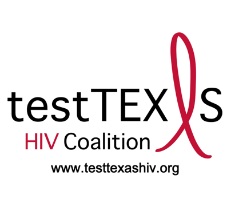From Healthy People 2020 Stories from the Field, a series highlighting communities across the Nation that are addressing the Leading Health Indicators (LHIs).
Human immunodeficiency virus (HIV) and acquired immunodeficiency syndrome (AIDS) are significant contributors to death and illness in the United States. People who have HIV but don’t know it are less likely to get the treatment and support services they need, and they are more likely to transmit the disease to others.
To increase knowledge of HIV disease, the Centers for Disease Control and Prevention (CDC) recommends routine, opt-out HIV testing in health care settings for everyone between ages 13 and 64.
Making HIV Testing a Standard of Practice
The HIV-STD Program of the TB-HIV-STD Section of the  Texas Department of State Health Services (DSHS) is a comprehensive, integrated program that guides HIV and STD prevention and infection tracking. They also provide education and guidance to programs that plan for, oversee, and administer related care services across the state. Jenny McFarlane, their HIV Prevention Manager, says the program takes an evidence-based, continuum of care approach to increasing people’s knowledge of their HIV status.
Texas Department of State Health Services (DSHS) is a comprehensive, integrated program that guides HIV and STD prevention and infection tracking. They also provide education and guidance to programs that plan for, oversee, and administer related care services across the state. Jenny McFarlane, their HIV Prevention Manager, says the program takes an evidence-based, continuum of care approach to increasing people’s knowledge of their HIV status.
Key to this effort is making HIV testing the standard of care for everyone, not just for people at higher risk. Because the program had already integrated HIV, STD, and syphilis testing in local health departments, McFarlane and her team were on board immediately when CDC first released its guidelines in 2006.
Texas is a huge state with 254 counties, so making sure everyone gets the services and care they need is a huge undertaking. McFarlane’s team started by using surveillance data to identify the areas with the highest HIV prevalence and the greatest need for services. They also reviewed existing screening programs within medical services supported by the state health department and worked to bring testing to departments that didn’t yet have it.
Next, they began connecting medical institutions—including hospital systems, emergency centers, community health centers, and jails—with resources to implement routine HIV testing with lab-based tests. In addition to working with large institutions, the program provided—and continues to provide—public health detailing, training, and support to medical societies and community programs. The goal is to help them implement policy and practice change to conduct routine HIV screening as a standard of care. They also provide funding for HIV testing when there’s not a payer already in place.
Just Another Vital Sign
Across the board, the goal is to make HIV testing routine. As McFarlane and her team have heard from other champions in the field, HIV status is “just another vital sign.”
One important aspect of the program, she explains, is that staff members will visit health care facilities to talk about the impact of undiagnosed infections and to provide training and technical assistance for implementing routine HIV testing. This helps to address the mentality of “That’s not my patients,” which they sometimes encounter in health care providers.
Clinics that have adopted the screening guidelines have seen some of their existing patients finally getting diagnosed, even after visiting the clinic multiple times already. This can happen for any number of reasons, McFarlane says. Some people may have simply never been tested, while others may know their status but don’t share the information unless their clinician asks about it.
Taking a Multi-pronged Approach
The HIV/STD Program supports the following strategies to promote HIV testing at multiple levels:
- Screening administered by STD programs, including screening of people connected to someone with a positive diagnosis as part of public health follow-up efforts
- Focused testing, which makes onsite testing easily available in the communities most vulnerable to acquiring HIV
- Routine testing in medical settings, which accounts for about 200,000 tests per year
McFarlane estimates that focused testing leads to about 50,000 tests per year in Texas. To support routine testing, the program holds trainings, convenes coalitions of stakeholders, and identifies ambassadors within facilities who can act as “champions” for the cause.
The program’s evaluation team validates patient status by matching testing data to surveillance data. This gives them more accurate prevalence estimates, and it’s also a way to know at the time of the test whether or not someone was previously diagnosed. Additionally, they’re able to assess whether or not people have access to care at time of diagnosis and to track the care they get moving forward.